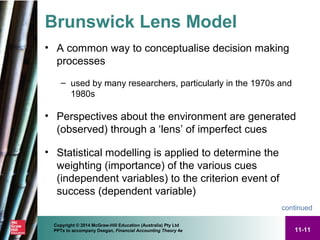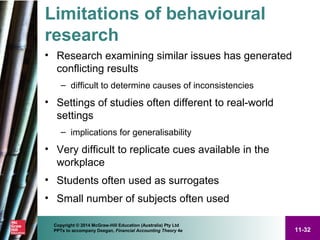This document outlines the key concepts and learning objectives of behavioural research in accounting. It discusses how behavioural research examines how individuals react to and use accounting information, using experimental methods. This differs from capital markets research which looks at aggregate market reactions. The document also discusses common research methods like the Brunswick Lens Model and protocol analysis, and explores how individuals use heuristics and cues when making decisions. Understanding how people process accounting information can help improve financial reporting and decision making.































